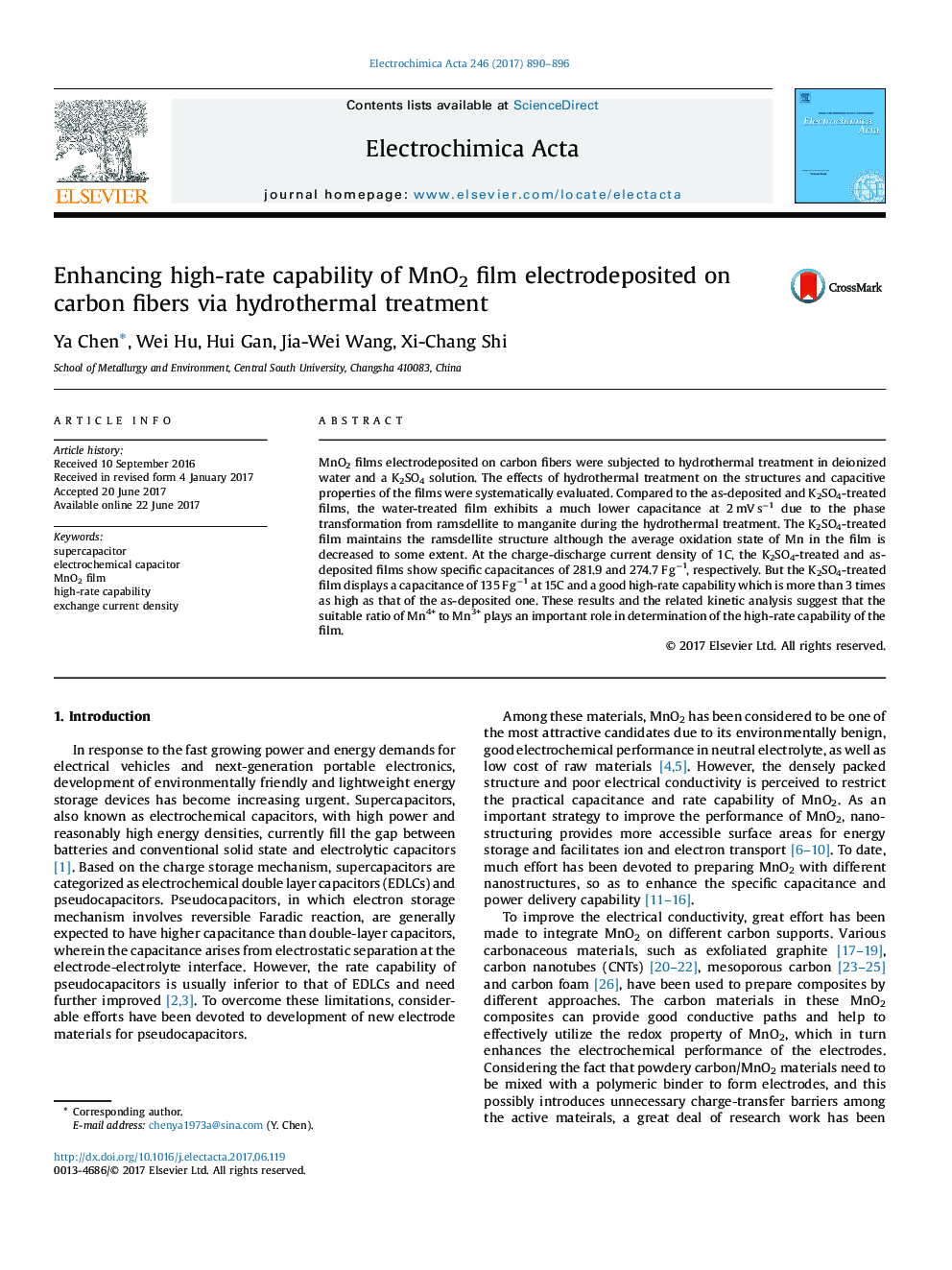| Article ID | Journal | Published Year | Pages | File Type |
|---|---|---|---|---|
| 6470642 | Electrochimica Acta | 2017 | 7 Pages |
â¢Electrodeposited MnO2 films were firstly subjected to hydrothermal post-treatment.â¢The hydrothermal post-treatment in a K2SO4 solution decreases the valence of Mn.â¢The K2SO4-treated film keeps the ramsdellite structure and water content.â¢The K2SO4-treated film exhibits a good high-rate capability.â¢Suitable ratio of Mn4+ to Mn3+ is important for high-rate capability of the films.
MnO2 films electrodeposited on carbon fibers were subjected to hydrothermal treatment in deionized water and a K2SO4 solution. The effects of hydrothermal treatment on the structures and capacitive properties of the films were systematically evaluated. Compared to the as-deposited and K2SO4-treated films, the water-treated film exhibits a much lower capacitance at 2Â mVÂ sâ1 due to the phase transformation from ramsdellite to manganite during the hydrothermal treatment. The K2SO4-treated film maintains the ramsdellite structure although the average oxidation state of Mn in the film is decreased to some extent. At the charge-discharge current density of 1C, the K2SO4-treated and as-deposited films show specific capacitances of 281.9 and 274.7Â FÂ gâ1, respectively. But the K2SO4-treated film displays a capacitance of 135Â FÂ gâ1 at 15C and a good high-rate capability which is more than 3 times as high as that of the as-deposited one. These results and the related kinetic analysis suggest that the suitable ratio of Mn4+ to Mn3+ plays an important role in determination of the high-rate capability of the film.
